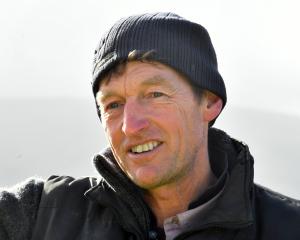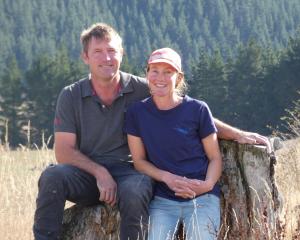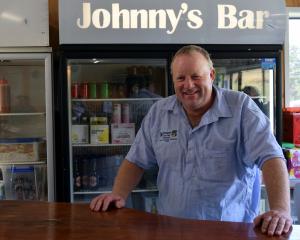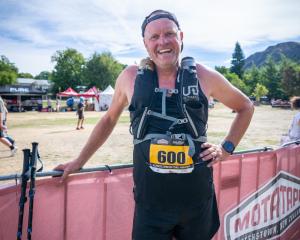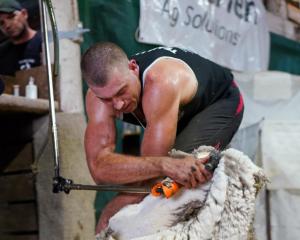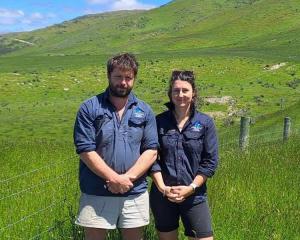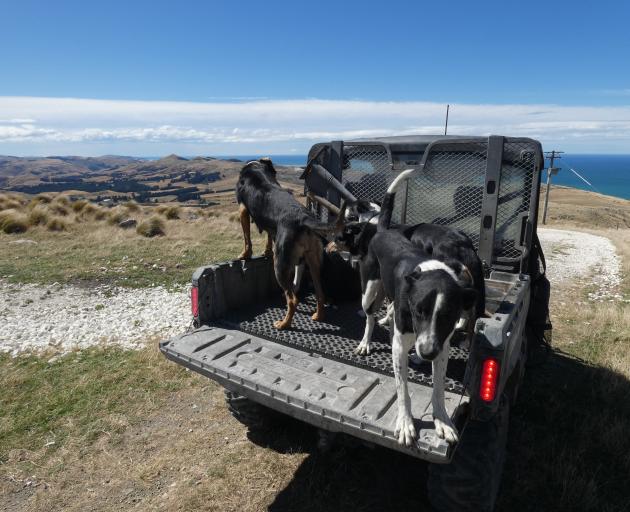
The dogs peer out of a neatly-lined row of kennels when they hear footsteps on the gravel.
Lunging, they strain at their leash and yelp in pent-up excitement, knowing a good run is in the offing.
With a bellow from Neil Evans the din half-heartedly hushes before erupting again.
A black-and-brown flurry of heading dogs and a huntaway or two are removed from their chains.
In a flash, the deck of the side-by-side all-terrain vehicle is bedlam as they jostle for space and set a pecking order for premium viewing spots.
The North Canterbury farmer turns the engine on and idles up a lime-chipped track, keeping the revs up on steeper legs towards the coastal farm’s 457m peak.
Corriedale ewes nimbly part to the left and right as it snakes along the strikingly white lane against a backdrop of bleached paddocks coming out of a dry summer.
Woe betide any of the canine passengers thinking this is an invitation to put their skills to the test.
One guilty culprit returns at speed to its allocated berth after misguidedly disembarking.
The ewes return to their grazing, watching on with disinterest as order is restored.
At the top, the dogs are released to stretch their legs around the site of a former telecommunications plant, long-since dismantled.
Only here, does the full panoramic vista of Seaview farm become apparent.
To the east is Pegasus Bay with neat paddocks sloping towards sea level until an abrupt drop to the coastline. Further south is Christchurch’s Port Hills and to the north the Kaikoura ranges.
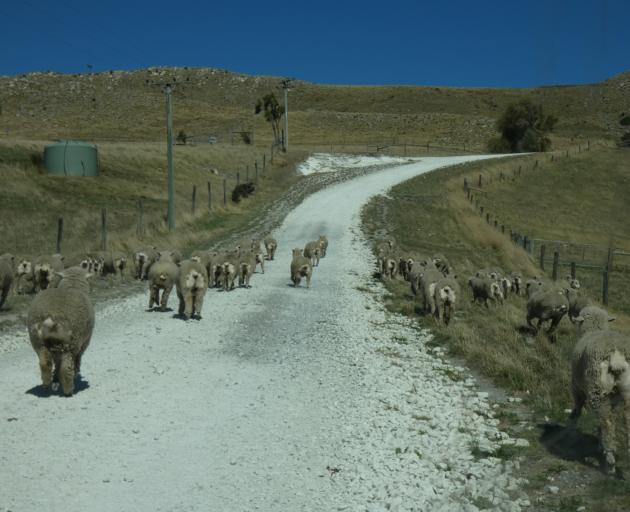
Most of the Omihi property of 1236ha is more than 200m above sea level, exposed to sea breezes and Canterbury’s infamous northwester. About half of it, maybe 500ha, can be navigated by tractor.
Without doubt this is dog country. Motorbikes do not cut it on the farm’s medium to steep hill country, in this farmer’s book.
Mr Evans said it would take eight people to do the same work and, while drones might have their place, they’re grounded during strong winds and stock refuse to budge if they cannot hear them.
At Seaview, the pack earns its keep mustering and shifting stock and maintaining a steady flow in the yards.
"Here on the farm I don’t know how much time they save us. I just wouldn’t want to be farming here full stop without them. And when your dogs are going really good in the dog trialling season, you get your general farm work done a lot quicker because everything is going right."
He concedes the dog count might be top heavy, but reconciles this with big days they put in.
The huntaway stocks are down, sadly, as his main dog died about eight months ago to a suspected bird or rabbit bone puncturing its gut.
Among the heading line-up is Tess, who he took with him to Ashburton as captain of the victorious New Zealand sheepdog trials team in the two-test series against Australia.
The nine-year-old has built up a strong record with two national and several island titles to her name on top of many run-off performances.
Starting to age, she might have another year ahead of her and faces being "very well looked after" in her retirement as reward for the many wins.
"She was quite easy to train as a pup and just had that x-factor from the word go. Her pedigree on both sides are pretty good. Normally you can tell and like them when they are six to eight months old. She’s got power, but she’s got a nice touch to keep sheep a lot quieter, which is great when you’re doing fine work or dog trial work or chasing a lamb or ewe on the wrong side of a fence."
By no means is she a sporting princess.
All of his dogs have to prove themselves at home before they’re taken for their first run at the local Omihi club.
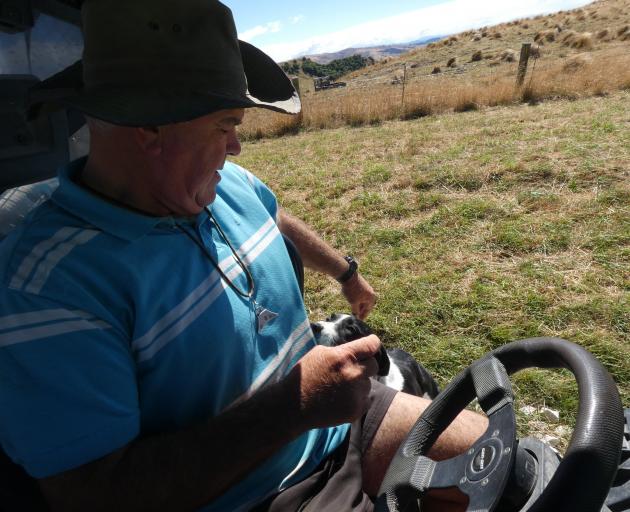
Any farmer would be happy to have any one of this trio in their working line-up.
"I’ve been a wee bit lucky the last two or three years with having experienced dogs not only for farm work but for competing. [The benefit] is probably more the predictability side of it — you have a fair idea what your dog is going to do and you can leave a lot more to them whereas a young dog has a few tricks and you’re not always sure what they’re going to do next at times."
Put Tess in the arena and an unspoken bond between the pair is reinforced by the many whistles Mr Evans uses as commands.
As a general rule, he prefers not to give them too many under the theory they listen more to fewer.
"To be fair, they can read stock better than I can. They’re well trained. When you are out mustering or dog trialling and are a long way away they can read sheep better than you can at the bottom of a hill. Quite often when you get the commands to them it’s too late, so leaving a bit of natural [instinct] to them is quite important."
This understanding between man and dog is born from more than 50 years of observation.
During the dog trials season, he puts more time into them to build them up for big events. Perhaps half an hour extra might be spent on each dog a day, on top of their working duties.
This is carefully managed as, like any athlete, they cannot run at their peak all the time.
Mr Evans was 18 and based at the family’s sheep and cropping farm near Rangiora when he first started dog trailing.
His father appreciated good dogs and suggested he ask Henry Eder, a well known stockman who worked at the neighbouring property, for a well bred heading pup.
"I’d obviously shown a wee bit of interest with other heading dogs there and he gave us one. We managed to give him a box of chocolates. He took the chocolates, but he wouldn’t take the money. He was in the background helping us when training the dogs."
The lineage of all of his heading dogs go back to that first bitch, Sue, which won maiden events in club trials.
The next door property was owned by the Stevensons, whose son Ian was on the same winning New Zealand test team with Mr Evans in the transtasman test.
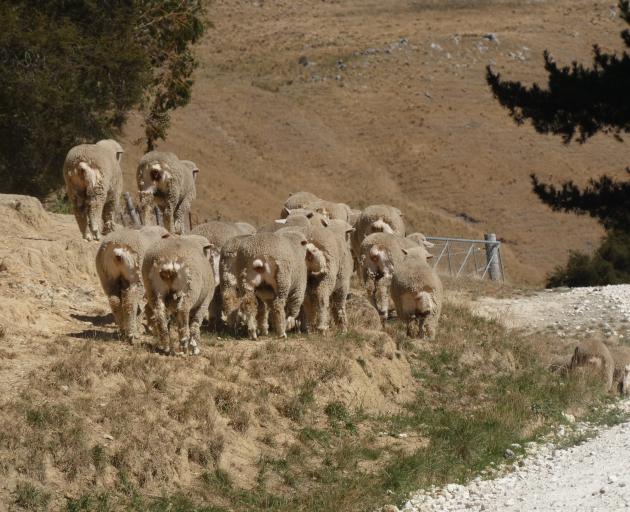
He must’ve had a good eye even then as Mack helped him to early success when the pair won in front of a large crowd at the Canterbury A&P Show in 1980 against a strong lineup.
"It was at the old site at Addington and I managed to win the first round with the top three going into the run-off and managed to win it. It was quite special. He was pretty good and I was green as hell, but that dog was another that had x-factor."
Mack repeated that effort in 1986 and went on to qualify for national events without making the final cut. Mr Evans ponders if his own passion for rugby got in the way of the duo going even further.
"He’s a dog I would love to have as a pup again."
Mack’s sterling start mysteriously tapered off when he was three.
One day Mr Evans took him to a nearby dog trial on a motorbike trailer as the main trailer with a dog box had a flat tyre
"He was just on fire when we got there and was happy as anything and the penny dropped and I built a new dog trailer. He went good after that again and just didn’t like that trailer."
In 1991 and 1994, he won an island title with a huntaway called Joy, but a national title eluded him until 2010 with Rose — Tess’ mother. Two others with Tess have since followed.
Mr Evans has been with the Omihi Collie Club since he and Marg moved to Seaview in the late 1980s.
Last season was a standout for the club’s tiny membership of 15 trialists when Mr Evans made two finals and Mr Stevenson and Ferg McLean also made the final cut at the national championships in South Otago.
With mileage under his belt, he’s learned to slow down if the sheep do not co-operate.
"Time is a great thing when you are dealing with stock. If things start to go wrong give them a wee bit of time and it normally works. You never ever remember other people having a bad run, you remember the good ones. That’s because we’ve all been in the same boat. The only thing I can see that’s sort of similar is jet boating. You always remember pushing your own boat, you never remember pushing other people’s boats."
Mindful that he got a good start from a generous act, Mr Evans has tried to pay it forward by accepting mating requests, gifting pups or freely giving advice.
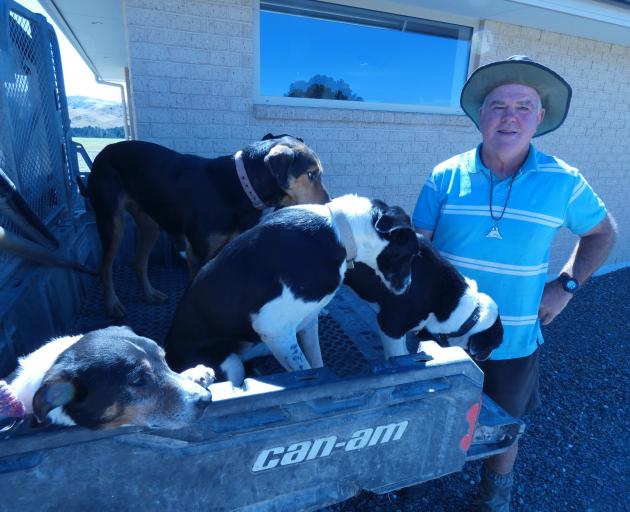
"People going into trials they learn a lot about how to read stock and even if your not talking about dogs and sheep you all have similar farming interests and pick up tips on general farming. There’s a few competitors around I always tell the young ones to watch and they show as much eye as the dog does. If you’re not watching the sheep, you’re always a split second behind. You can learn a lot by just watching the body language of sheep even in the sheep yards."
Easy going normally, when he steps in the arena the competitiveness comes out.
"Sometimes at home I think I might be a wee bit over the top trying to do everything right. Perhaps if you are working the stock at home as though you are judged all the time you put yourself under pressure and it makes it easier when you go to the dog trial grounds. Hopefully, everybody else thinks I’m free with my knowledge. The more we can improve the standard around our local dog trials the better you are prepared for a championship."
He and Marg bought Seaview in 1988. As a 21-year-old he and his brother leased their parents’ Fernside farm, building up equity for the transition to farm independently.
Seaview was 595ha at that stage and they arrived with an old three-wheel motorbike as their only machinery. After the first wool cheque, they quickly upgraded to a more stable quad bike.
"We had our block of land and we had our stock and just worked with Mother Nature to try and make as much money as we could do. Now with all the rules and regulations around and the compliance all the young ones have to do, farming’s like a paper trail. Having a simple system has maybe worked in our favour."
Seaview came with 3500 Corriedale ewes and the stocking rate was peeled back to 2200 ewes. Their mid-micron wool on the stronger side was about 30 microns, with lambing at about 135%. Today, the wool is finer at an average of 26 to 27 microns with the same lambing rate retained.
Mr Evans likes the Corriedales as they thrive when the farm turns dry.
Other breeds were found to have larger appetites, but he accepts the ultimate call now rests with the next generation.
He started a Corriedale stud in 1979 which continues to be run by Andy and Amy. At its peak, 50 rams were sold a year to commercial farmers and stud ram fairs.
Before he stopped showing in the 1990s to concentrate on dog trialing, their Corriedales won top ribbons for the breed and once the supreme fleece at the Canterbury A&P Show.
Today, their 180-odd stud ewe flock is run with the main mob to put commercial pressure on them.
Sourcing outside genetics is becoming harder with breeders calling it a day, farmers turning to other genetics or sheep country going to dairying or urban subdivision.
On a larger land base, the flock has expanded to about 4200 ewes and the herd to 280 Angus cows.
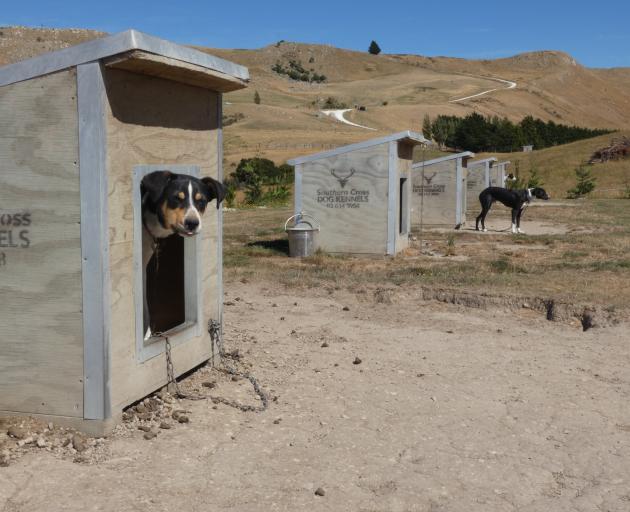
The hope is more buying opportunities will come in the future as their daughter, Anna, and son-in-law Brendon Stewart, are also keen on farming and lease a property on the border of Otago and Southland.
Andy has been in a 50% partnership with the senior Evans for close to 10 years, taking on the lease about 18 months ago.
A decade ago, the farm did not have a tractor with only diggers or dozers hired to upgrade tracks.
Under Andy’s guidance, some baleage is made by a neighbouring contractor and he has accelerated regrassing and stepped up the farm machinery. The farm now carries a spray unit and grabs attached to a front-end loader fill in limestone holes with rocks.
Dog trials are a family affair.
Andy competes and helps at local trials, while Amy is a keen horsewoman in showground competitions and a handy trialist at club events.
Mrs Evans has just qualified with heading bitch Sue for the open section of the national championships for the third year in a row.
"Neil and I actually met at the dog trials years ago when we were very young," Mrs Evans said.
Mr Evans was judging at the Omihi trials at the time and Mrs Evans’ sister arranged for her to timekeep for him.
Their son-in-law is also a competitive trialist, finishing national runner-up and winning a South Island title at the Tux handy dog challenge in South Canterbury.
Not to be outdone, daughter Anna won the maiden South Island and New Zealand titles in the same event.
In semi-retirement now, Mrs Evans has handed over the books to the next generation, while Mr Evans is happy to be told each morning what to do by his son.
This, in theory, leaves him more time to breed the perfect dog and try to be the best competitor for as long as possible.


